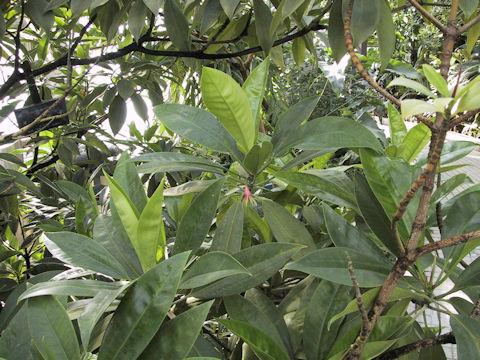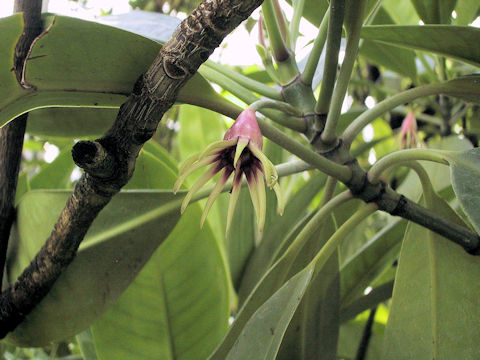 |




|

|
MÑAWAª´YÅAíªÅÍ«êÈìÌì¼ÉªzµÄ¢Ü·BÍûâD
æÌ}O[u¼nɶçµÜ·B³ÍPO[gÙÇÉÈèA½³ñÌxªð½±«óɯܷBíqÍ÷ãÅè·éÙ¶íqÅAC¬ÉæÁĪzðL°Ü·BʼÅuâ¦âÜÐé¬iªdRYØjvÆàÄÎêÜ·B
|

|
qMÈIIoqM®ÌíάØÅAw¼Í Rhizophora mucronataBp¼Í Red mangroveB
|

|
The Red mangrove (Rhizophora mucronata) belongs to Rhizophoraceae (the Mangrove family). It is a tall evergreen tree that is native to tropical Asia, and is distributed in the Nansei Islands south of Okinawa in Japan. It grows in estuaries and brackish mangrove swamps. It grows up to 10 m tall and bears many prop roots in the shape of octopus-like legs. The seeds are embryonic seeds that germinate on the tree and spread by ocean currents. It is also known as "Yaeyama-hirugi".
|

|
ss¶æus{§A¨vÉÄA2003N0105úBeB
|



